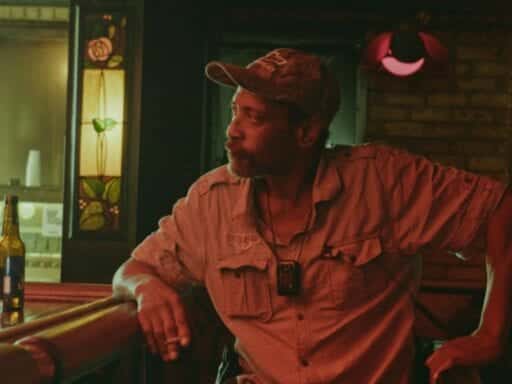It’s an empathetic portrait of a bar and the people who love it — with a twist.
There’s a reason dive bars and pubs have always provided fruitful settings for storytelling, from The Iceman Cometh to Cheers. A great drinking establishment has stories scratched into its furniture, history in its grime. No shiny veneers or $15 cocktails; just slightly tacky surfaces and the same guy behind the bar, who’s been slinging pints for as long as anyone can remember. Local watering holes have one-time visitors and occasional customers, but most importantly, they have regulars. One way to judge a bar is by its most familiar faces.
And that’s why it feels like a tragedy whenever a beloved old bar or pub or tavern shuts down. Inevitably, it was more than just a place to pass the time and have a drink (or too many drinks). It was a “third place,” an in-between space where time seems to pause. People relax and let their guard down. They fight and argue and tell tall tales, and over time, they get to be friends. Or family. On the best of nights, a great bar feels like a glimpse of heaven. On most nights, it’s where you go to escape the world outside for a while.
That feeling, of a bar as a haven from the madding world, is at the heart of Bloody Nose, Empty Pockets. Documentarians and brothers Bill and Turner Ross chronicle the last night of service for a Las Vegas dive bar called Roaring ’20s, as regulars come and go, fight and kiss, and try to face the fact that the place that felt most like it was theirs will no longer exist. For them, it’s the end of the world.
But there’s a catch: The bar never existed. While the Ross brothers have most often made documentaries, for Bloody Nose, Empty Pockets they constructed a bar on a set (in New Orleans!) and hired actors to play the characters. Then they shot the film over three days, including a marathon 18-hour session that covered the entire “last day” of the bar’s operations.
Is the movie fiction? Yes, technically. Is it nonfiction? Not exactly. Is it “real”? Absolutely.
You can catch glimpses of film crew members in the bar’s mirrors, and the camerawork throughout feels more like the stuff of vérité than most fictional films, which tend to use a more controlled style. The Rosses had a plan for how the day would play out — what time people would show up, when they’d leave, roughly what would happen in the meantime — but no set script, so the actors are developing their characters in real time. It feels very much like you’ve stumbled into a dive bar as it closes up shop.
The bar’s regulars aren’t up-and-coming Vegas insiders. They’re mostly people who feel disillusioned, defeated by the world: old drunks, former performers, self-proclaimed failures, people scratching out a living on the edge of the city that most resembles America’s id. The action of Bloody Nose, Empty Pockets happens almost entirely within the bar, but through conversations between the regulars and hints of the outside that break through on the TV, we glimpse and remember what the characters are trying to escape — a world that feels like it’s imploding.
Watching Bloody Nose, Empty Pockets is like listening to a long, slow lament. Years pass while we sip a pint and recount the same old stories to the same old faces. Everyone ages. Relationships and friendships come and go. Nothing lasts forever, not even the grimiest, most grizzled bar in town, a place that seems older than time. The film is a beautifully empathetic work of art.
Bloody Nose, Empty Pockets premiered at the Sundance Film Festival on January 24, 2020. It is awaiting distribution.
Author: Alissa Wilkinson
Read More



